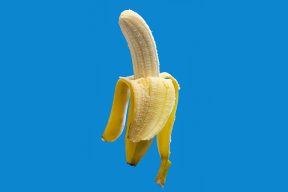Many people throw salt over their shoulder for luck. Unfortunately, many people also throw it on their food out of habit. A few shakes may seem harmless (especially if you’re dealing with bland food), but it can be damaging to your health.
Salt is full of sodium, a mineral that your body needs to stay healthy. But we only need 2,300 milligrams of sodium a day or less, according to Health Canada. And one teaspoon of salt has about 2,400 mg of sodium. See the problem?
Devouring more than your recommended daily intake of sodium can contribute to overall cardiovascular risk, says registered dietitian Stephanie Demaio. She estimates almost 99 per cent of people consume too much sodium.
That’s why we [dietitians] are trying to limit sodium intake, because it seems the sodium intake in North America is crazy, said Demaio. It’s really, really high.
But it’s more than just salt. Modern society’s obsession with convenience has created a culture centered on pre-packaged foods. Most people get their daily recommended sodium intake from the naturally-occurring sodium in non-processed fruits, vegetables, dairy and proteins. And many, if not all, prepared foods have sodium added. Not only to add flavour, but also because sodium benzoate is one of the most popular preservatives added to these prepared foods.
Not all processed foods have too much sodium, but there are many that may seem healthy and have far too much for one meal. Here are some of the worst offenders:
Prepared Soups
Many soups have garnered healthy labels, whether through their brand-name’s association, like V8, or in the actual name, like Campbell’s Healthy Request. But that is usually only related to fat. So even if a soup has less fat than most, it often has the same sodium content as the others.
Breads
Bread can be one of the worst sodium offenders. It’s important to be conscious of sodium in bread, especially with whole wheat. Bread made with whole grains can seem like a free pass, since its nutritional value is generally uncontested, but it isn’t always the best choice.
You’d think, ˜I’m buying whole wheat bread, it’s healthy,’ but they can actually pack a lot of sodium, says Demaio. You can always make your own bread, and then you know exactly what goes into it.
Low sodium options
While low sodium options are definitely better than their regular counterparts, they can still have a lot of sodium.
Don’t get caught up in that, says Demaio. A lot of ˜low sodium’ soups still have 700 to 800 milligrams of sodium. It’s lower, but it’s not low.
Not exactly a healthy option. If it’s something that can easily be swapped for something with no salt added (for example, President’s Choice now makes chicken and beef broths without salt, taking broth off the worst sodium offenders hit list), make the switch. But for something that always has salt (like soy sauce), a lower-sodium option is better than nothing.
Low fat options
Low fat options are perhaps the sneakiest sodium culprits. Unfortunately, fat often equals flavour. So when you remove most or all fat from the equation, the flavour goes down too. This is where manufacturers will add salt to compensate for the lost flavour. Not only is it unhealthy, too much salt can actually work against you when you’re trying to lose weight. It dehydrates your body and can make you gain water weight to make up for your body’s dehydration. So next time you’re reaching for that guilt-free fix, just be sure to check the nutrition label.












Comments